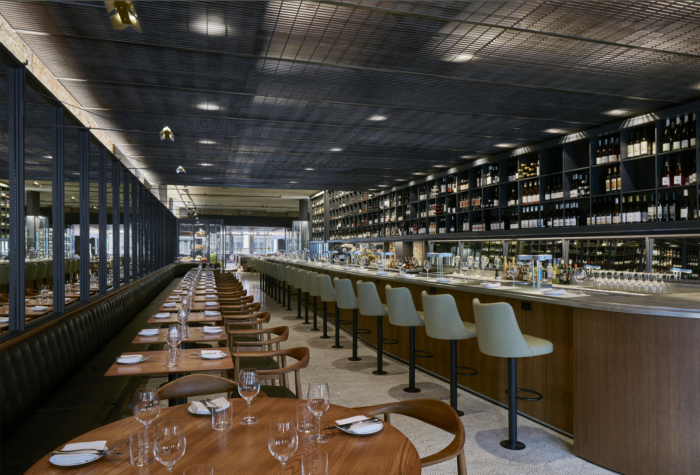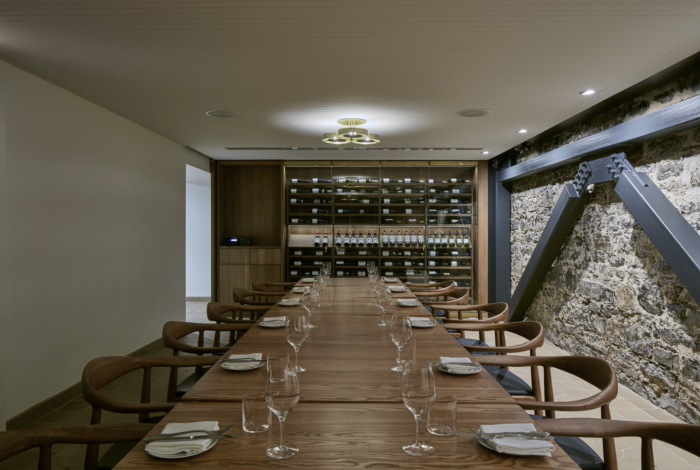Restaurant Le Monarque
Restaurant Le Monarque accomplishes an intimate restaurant feel on a large scale with various seating options and attention to detail, as carefully designed by Alain Carle Architecte in Montreal, Canada.
Over the years, Montréal has become Canada’s fine dining capital, multiplying the number of refined universes developed through carefully crafted layouts. One trend stands out: a small restaurant with a relaxed atmosphere and an inventive and innovative cuisine. However, another fringe of the Montréal restaurant scene is de ned by a more generic approach, appropriating large premises where the ambience is often impersonal and the customer relationship is less attentive, less personalized.
The Le Monarque restaurant is attempting a reconciliation between the polished small scale of the neighbourhood restaurateur and a larger space, fittingly rooted in metropolitan culture and based on a restaurant culture with a long-term focus.
This site in Old Montréal is a historical agglomeration of three separate spaces, including two distinct buildings and a former alley. Unprecedented in its structural complexity, this project took shape over an incredibly long period (over 5 years!), a gestation time that made it possible to recognize the intrinsic quality of the three spaces and design a project in a perspective of continuity. Le Monarque thus became a bar, a bistro and a dining room with an innovative menu, all under the same roof.
The layout departs from aesthetic “trendiness” by offering refinement based on precision in the kitchen, visible from the customer space. The materials are simple and durable. A marble floor was incorporated, not in a stylistic perspective, but due to the material’s ability, through the rounded part of the motif, to negotiate the different axes of the three spaces geometrically. The cellar is mechanically unique, because its “open” refrigeration system allows storage of bottles without the use of tight doors. The upper parts of the spaces are left “bare”, exposing the internal mechanics of the places and the traces of its successive transformations over time.
Design: Alain Carle Architecte
Photography: James Brittain Photography




















Now editing content for LinkedIn.